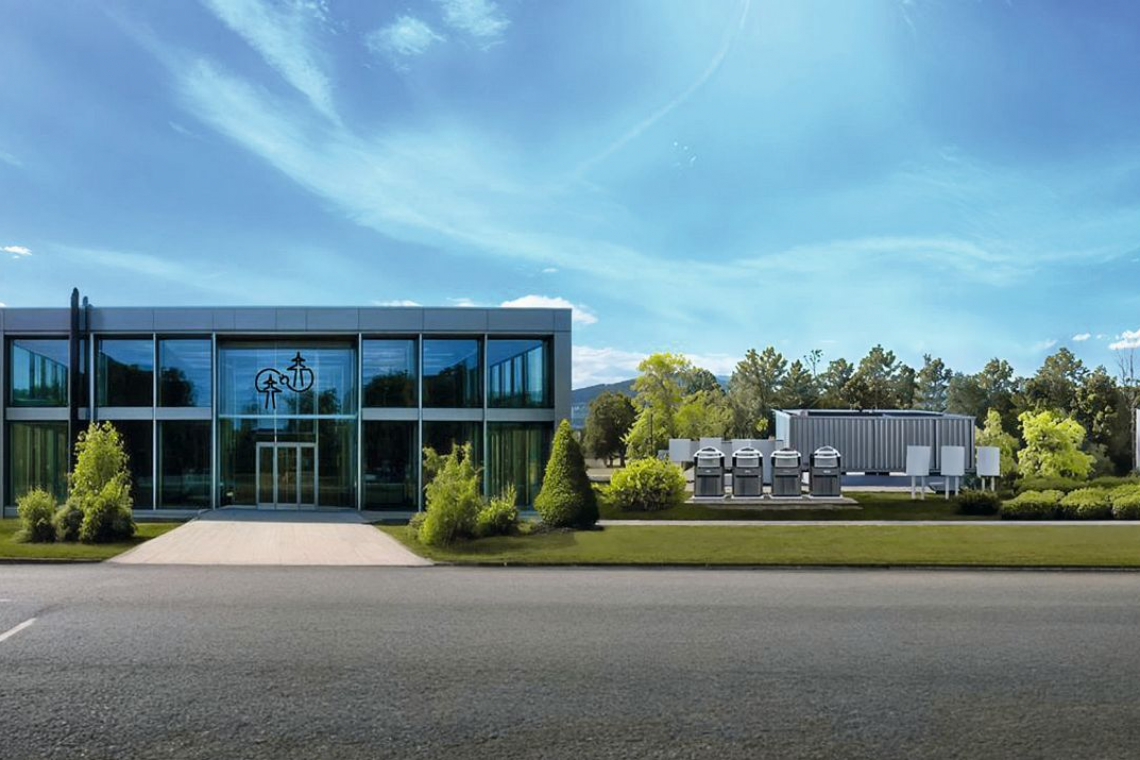Decentralized feed-in of electricity from renewable sources is increasingly replacing central power plants. This is changing the demands on electricity grids. At the High Power Grid Lab (HPGL), new grid technologies will be investigated in a test environment that simulates the real power grid as accurately as possible.
The focus is on low- and medium-voltage grids for regional electricity distribution. The test platform is due to go into operation in 2030 as part of the Energy Lab at the Karlsruhe Institute of Technology (KIT). Its construction will be financed with 32.8 million euros from funds for strategic expansion investments of the Helmholtz Association.
The aim of the HPGL is to research new types of power electronic grid equipment, such as grid couplings and power converters for direct current (DC) grids, in an environment whose behavior reflects the real grid as accurately as technically possible.
Real-time simulation maps system behavior
"With the HPGL, we are creating a globally unique research environment to investigate the behavior of innovative grid equipment under realistic conditions," says Professor Marc Hiller, Head of the Electrotechnical Institute (ETI) at KIT. "This infrastructure will play a decisive role in developing new technologies for the transformation of our power grids." The aim of the HPGL is to research the system behavior of new types of grid equipment such as power converters for medium-voltage direct current grids in a grid environment that is as realistic as possible.
Due to increasing electrification, interconnected medium-voltage grids, regional distribution grids and industrial grids are becoming more and more important. The Smart Energy System Simulation and Control Center of the Energy Lab at KIT combines the real-time simulation of power grids with the emulators for medium-voltage grids that will be available at HPGL in the future. The real-time simulation determines the system behavior of the power grids, while the emulators simulate this behavior in the real world with a real power flow. This allows various components to be comprehensively tested. The result is a flexible test environment - Power Hardware in the Loop - whose behavior represents the real grid as accurately as possible. For example, the energy flow from one medium-voltage grid to another can be controlled. As one of the largest research platforms in Europe, the Energy Lab real-world laboratory links test facilities for power generation, energy storage and use in order to develop an intelligent overall energy supply system.
State-of-the-art technology for medium-voltage grids
"The medium-voltage emulators used in the HPGL are specially developed for this project," explains Lukas Stefanski, scientific and technical project manager at the HPGL. "We can emulate AC grids up to 20 kilovolts and DC grids up to 35 kilovolts without transformers up to an output of 40 megavolt-amperes. This is a decisive step forward for research into high-performance technologies for the increasingly important medium-voltage distribution grids," says the scientist. Dr. Rüdiger Schwendemann, sub-project manager for the HPGL components, emphasizes: "A central goal of the HPGL is to develop innovative power electronic equipment for medium-voltage grids and to test it under real conditions. The emulators make it possible to precisely map the grid behavior and to emulate operating and fault conditions in a reproducible and safe manner."
Cooperation for the energy transition
In addition to the ETI, the Institute of Electrical Energy Systems and High Voltage Technology, the Institute of Automation and Applied Computer Science and the Institute of Technical Physics are involved in the overall project at KIT. Many national and international industrial companies, grid operators and research institutes are also involved in the development phase. The HPGL thus forms a bridge for the rapid transfer of research results into practical application - a crucial aspect for the successful implementation of the energy transition.


